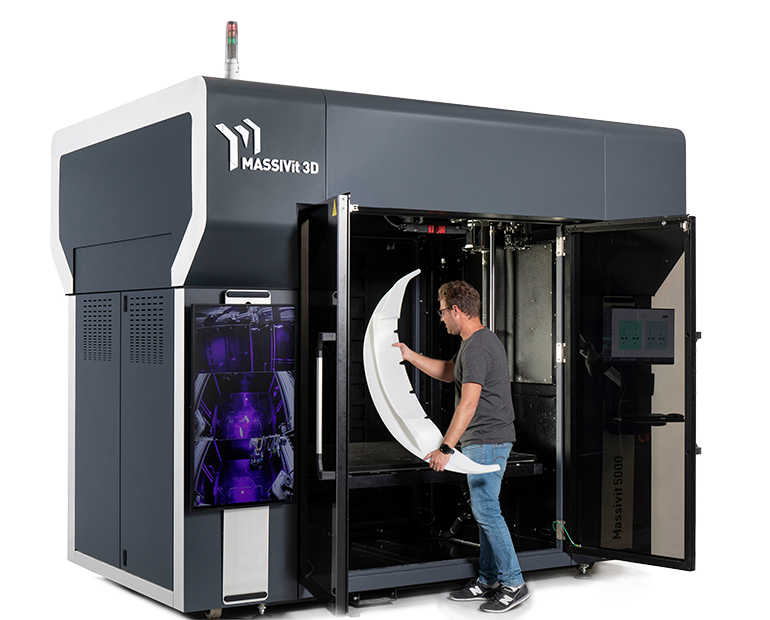
Next Steps in 3D Printing: Advances in Volume Production, Composites
While the COVID-19 pandemic provided yet another way for plastics-based 3D printing to shine — in the rapid production of personal protective equipment, for example — industry experts are still looking for next-level developments in volume production and systems that can handle composites.
|
Massivit
 |
| The Massivit 5000 prints parts as large as 57 x 70 inches at significantly faster speeds than other technologies. |
Material portfolios continue to expand for end-use parts, particularly for medical, dental, and automotive applications. Concurrently, printers are evolving for larger-scale production — one example is the recent launch of the Massivit 5000, geared to industrial-grade automotive, rail, and marine applications. The Massivit 5000 uses UV-cured gel to print large parts — up to 57 inches wide, 44 inches deep, and 70 inches high — at speeds up to 30 times faster than other technologies, the company noted in an April webinar.
“The industry is most bullish on polymer technologies suited for volume production,” with vat photopolymerization and powder bed fusion modalities proving most up to the task, noted Chris Connery, Vice President of Global Analysis for London-based Context. “System revenues for powder bed fusion shipments are projected to see a five-year CAGR to 2025 of 32%, and vat photopolymerization machines up 24%.”
Scalable systems like 3D Systems’ Figure 4 or the fleet of HP Multi Jet Fusion printers used by Smile Direct Club offer a glimpse into the factories of the future, Connery asserted. This is particularly evident with service bureaus and contract manufacturers that “bring on new machines constantly. As demand grows for running shoes, sports equipment, clear dental aligners, and a multitude of other applications, production capacity can then easily follow. Even more importantly with today’s COVID-impacted supply chains, the flexibility of 3D printing — the same machine can make hearing aids one day and PPE the next — is being recognized not just as a ‘nice to have’ research experiment, but a needed technology in one’s manufacturing plan.”
Advances in polymer sintering technologies have “really opened the door to mass production,” Connery said, “helping the industry think in terms of mass production and not just prototyping, mass-customization, or low-volume production. Technologies focused on mass production represent the largest growth area for 3D printing, not just in the long term but even today, as attentions have turned more to flexible, digital technologies capable of more easily adapting to unforeseen supply-chain disruptions.”
Echoing those sentiments, industry guru Terry Wohlers is looking to several promising new machines and processes to answer evolving production requirements. Chief among those are the LaserProFusion from EOS, Selective Absorption Fusion from Stratasys, and STEP from Evolve. “Few people have seen the actual machines, and none of them have been proven commercially, but what we know sounds interesting,” he said. “Machines and processes for composites are in need. I expect we will see some interesting advances in this area in the future.”
Wohlers has his eye on the evolving impact of polymer powder bed fusion systems from HP, EOS “and possibly others. They offer durable parts and relatively high throughput for production applications, compared to alternative methods.” In his view, high-volume output with scalable systems will be used more for “parts in which cosmetics and feature detail are important but part strength and long-term material properties are less important,” said Wohlers.

Leave a Reply